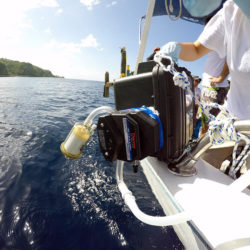From O3 to April 23 and from 04 to June 22, 2019
MISSION NEW CALEDONIA 2019 – PACIFIC
- ADN environnemental, Deep water, New Caledonia, sharks
The MEGAFAUNE project
A vast inventory of marine megafauna – fish, marine mammals, sharks, turtles, etc. – has been undertaken throughout the world. The mission to New Caledonia is one of the stages in this large-scale operation.
Exploring the unknown
Explorations de Monaco helped finance two missions that took place respectively in April and June 2019 from New Caledonia aboard theAlis as part of the 2019 program of the French Oceanographic Fleet.
Their research project: to explore the isolated islands and seamounts of the Coral Sea in order to study, identify and record the marine fauna that inhabits them.
These operations were conducted under the direction of Laurent Vigliola (researcher at the French Institute for Development Research (IRD), Seamounts program funded by the French National Research Agency and the Coral Sea Natural Park) and David Mouillot of the University of Montpellier, research director of the MARBEC (MARine Biodiversity, Exploitation and Conservation) Joint Research Unit.
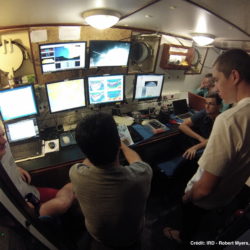
Seamounts, oases of life?
The seamounts of the Coral Sea rise more than 1,000 m above the seabed.
Their peaks outcrop at a depth of 50 to 100 m below the surface, and they remain largely unknown.
To date, only 4% of these areas have been sampled for scientific purposes.
Yet there is every reason to believe that these unique ecosystems are oases of life and hotspots of biodiversity.
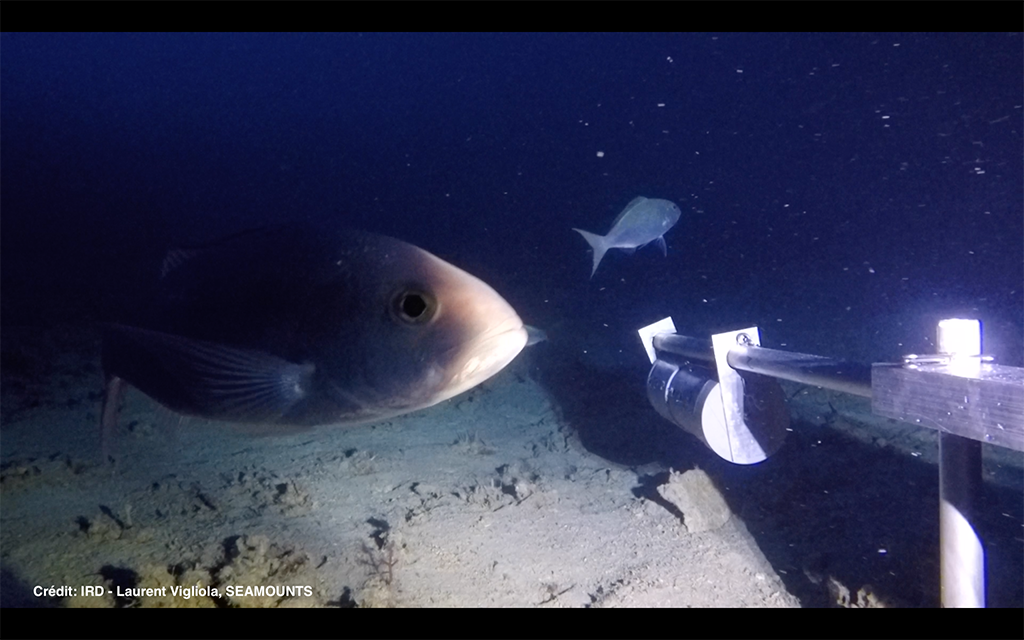
Risk of overexploitation of species
Unfortunately, these deep-sea areas and the animals that live in them are greatly threatened by ever-increasing fishing pressure, which puts certain species at risk of overexploitation or even extinction. Today, the protection of marine animals such as sharks and other large vertebrates is at the heart of environmental concerns.
Exploring the deep sea is essential to better understand and protect them.
Innovative scientific and technical hypotheses
Two main techniques are deployed to detect the species present in these deep zones: water sampling to study environmental DNA, and baited cameras.
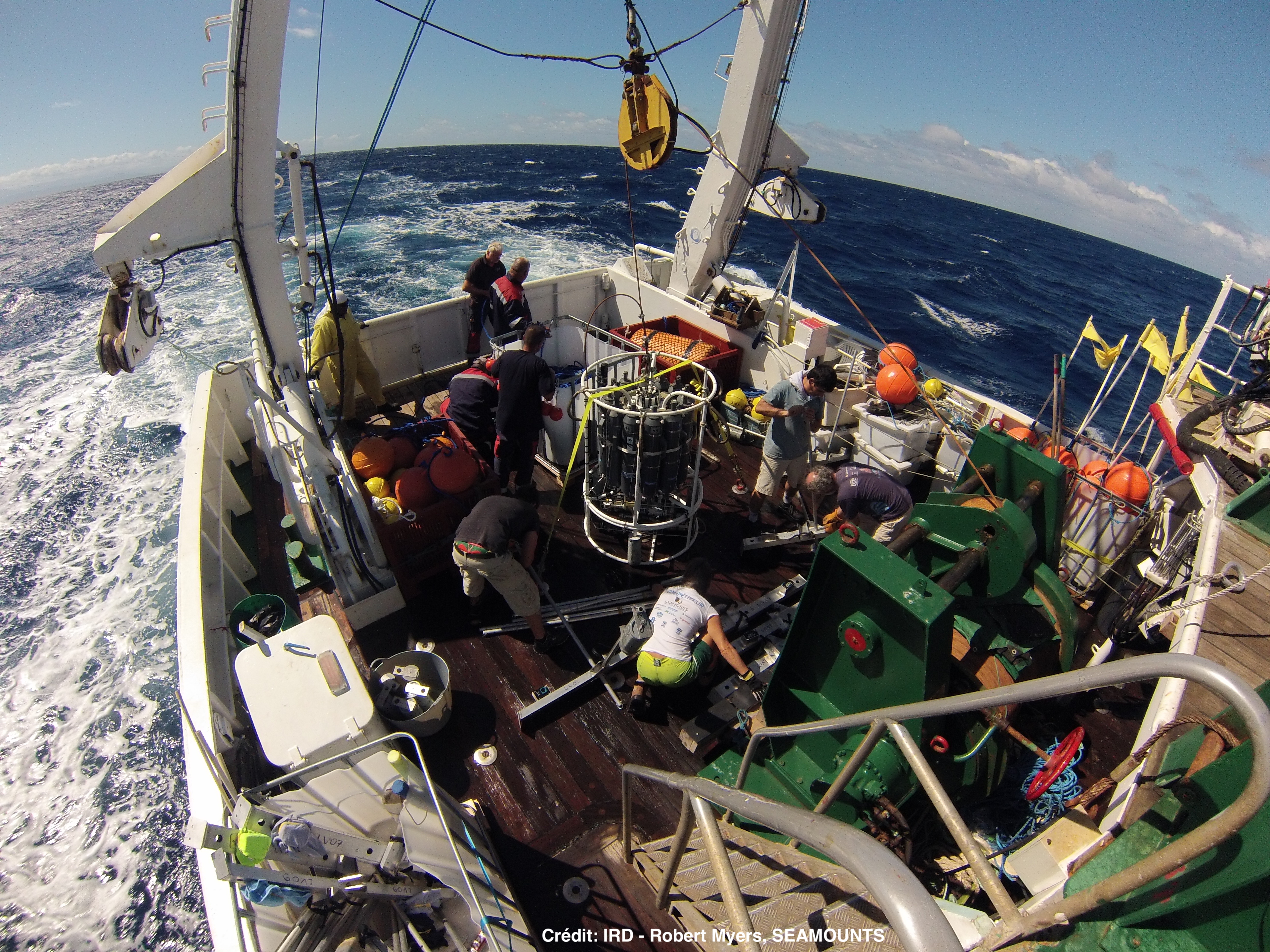
Location
– Environmental DNA
The principle is based on the study of DNA traces (fingerprints) that persist in the water after the passage of a species.
This involves collecting seawater at a given location at targeted depths, filtering it, isolating the DNA present and comparing it with a catalog of existing data (reference database) to find out which species was present, where and when.
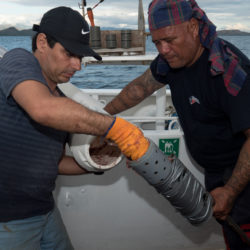
– Baited cameras
Installed in the water column or on the seabed, they record images of fauna attracted by bait placed in front of the lens.
Researchers thus discover the diversity of species that inhabit the deep sea, estimate their quantity (“biomass”) and study their behavior.
Operated according to a precise protocol, baited cameras can be used to track the evolution of an area over time, and to compare geographically distant zones.
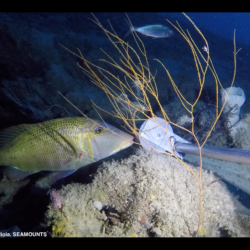
– The crossroads of two techniques
Thanks to these two complementary techniques, scientists hope to provide answers to a number of questions: are seamounts oases of biodiversity?
Which vertebrates really find refuge from human pressures in these deep-sea areas?
Are large marine vertebrates simply beyond the reach of man in these deep-sea areas, and not in decline at all?
The breadcrumb trail of Monaco Explorations
With the support of Explorations de Monaco, these animal-friendly techniques were tested and improved on several occasions, notably during the transatlantic crossing and the Sargasso mission, but also in Colombia, at Malpélo and later during Laurent Ballesta’s Mediterranean Planet mission.
Mission after mission, the Ariadne’s thread of biodiversity is unravelling, and little by little bringing many exciting discoveries.

Many species yet to be referenced
Today, only 16% of species are genetically referenced.
A huge amount of collection and sequencing work remains to be done to complete the reference database.
During missions on theAlis, targeted sampling was also organized to take fin fragments from fish in order to extract their DNA and reference them through DNA sequencing.
Results already!
Since the start of the missions supported by Explorations de Monaco, 1,000 new species have been added to the environmental DNA reference database.
Of the 6,000 species of vertebrate tropical fish currently known, only 2,000 had been sequenced until now.
Since 2017, 1,000 new species have been added thanks to the work carried out as part of the MEGAFAUNE project.
International database
This reference database is shared internationally by the entire scientific community, making it much easier to identify the marine species that frequent a given area.
Testimony of Laetitia Mathon, doctoral student and mission member
During this mission, we worked on completing the tropical fish reference database.
Indeed, in order to be able to recognize species (via their DNA) in environmental DNA samples, we first need to know their sequences.
To do this, we extracted DNA from samples stored in IRD freezers, and also collected fish tissue from the Noumea market.
This DNA was then sequenced, resulting in 122 new sequences.
During this mission, we also set up video image capture by flying over the lagoon, in order to be able to identify the megafauna.
Coral Sea Natural Park
In 2012, the agreement signed to create the Coral Sea Nature Park in New Caledonia (1,300,000 km2) made it one of the largest marine parks in the world.
It represents 12.7% of France’s maritime area and encompasses 55% of New Caledonia’s coral reefs.
The New Caledonian government is currently working on the precise spatialization of the park.
This involves deciding which particularly noteworthy areas will be sanctuaries, and which others will be open to reasoned human exploitation.
An important decision-making aid
The zoning process requires the compilation of existing information and the support of initiatives aimed at collecting new information useful to the establishment of the park.
The data collected by Laurent Vigliola and David Mouillot’s team contributes directly to the information provided by the New Caledonian government.
They provide new knowledge on the biology and habitat of vertebrates, invaluable in the process of setting up the Coral Sea Natural Park.
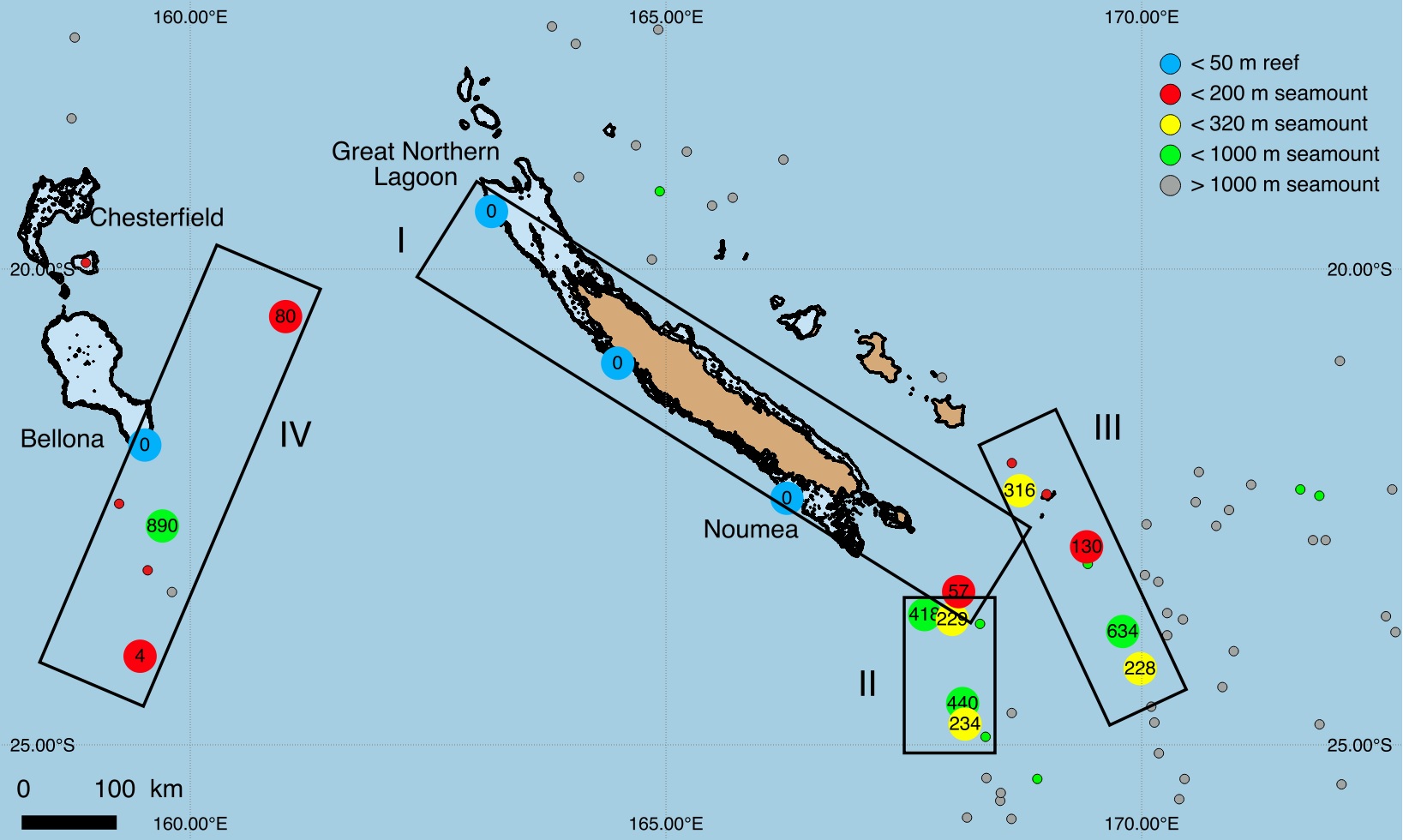
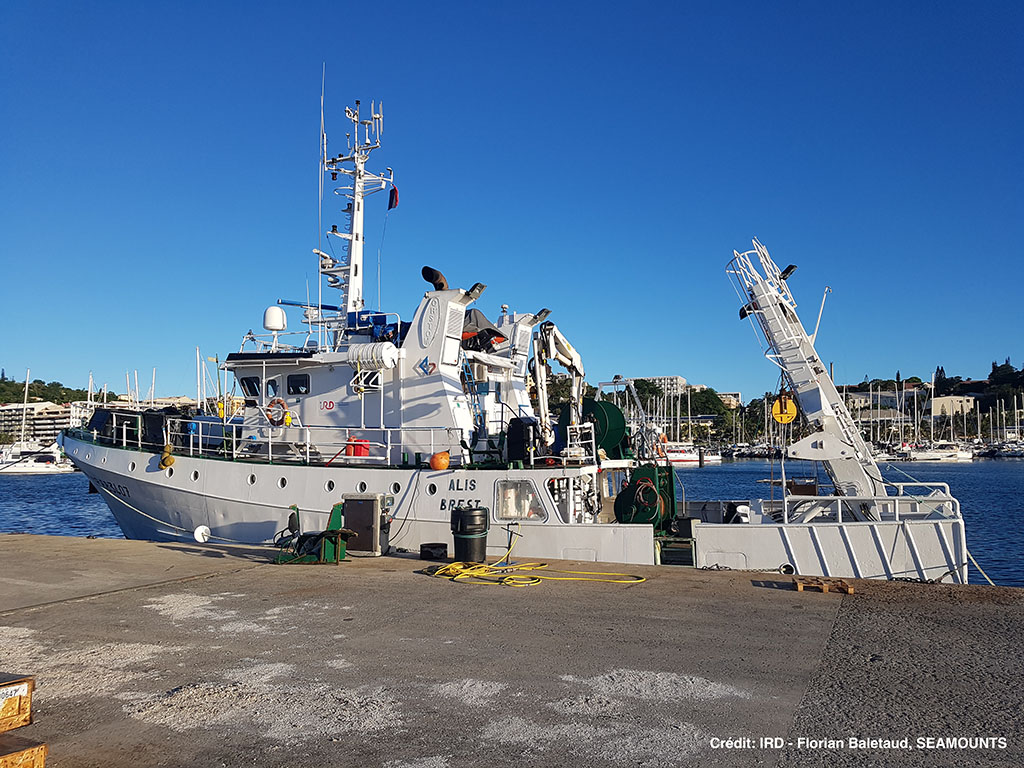
L'Alis
The N/O Alis is part of the French oceanographic fleet, operating in the South-West Pacific Ocean from French Polynesia to Papua New Guinea.
She is based in New Caledonia.
She carries out missions in physical oceanography (bathysonde, hull Doppler current meter), biology (instrumented trawls, EK60 water column observation sounder), and bathymetry (EM1002 multibeam sounder).
It is also used as a support vessel for diving missions (biodiversity studies).
Mission members

David Mouillot
David Mouillot, from the University of Montpellier, research director of theMARBEC (MARine Biodiversity, Exploitation and Conservation) Joint Research Unit, and his team have been investigating the distribution of megafauna in deep-sea seamount areas for several years.
Using environmental DNA and baited camera techniques, his team, in collaboration with Explorations de Monaco, has collected data in several areas around the globe.
David Mouillot was named a “senior member” of the Institut Universitaire de France this year.
Find out more here.
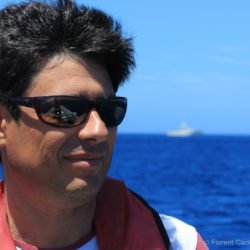
– Dr Laurent Vigliola
Laurent Vigliola is a researcher at IRD Nouméa, where he studies coral reef fish on local, regional and global scales.
Mission leader for the last twoAlis expeditions, his research focuses on coral ecosystems and the complexity of connections between species.
He uses a variety of tools including dive counts, fish otolith analysis (age, growth, microchemistry), light traps, acoustic telemetry, environmental genetics, population genetics and modeling.
To find out more, click here.

– Laetitia Mathon
Laetitia is a young doctoral student at the CNRS, in partnership with the UMR Entropie in Nouméa, and the company SPYGEN.
Passionate about marine animals, their ecology and the great mysteries that surround them, she has embarked on a thesis on the study of fish distribution in little-known environments, such as seamounts or the deep sea.

– Nadia Faure
Nadia is currently studying biology at Swansea University in Wales, as part of an exchange with her home university Grenoble Alpes, for her3rd year of a Bachelor’s degree. Although she was born in the mountains, she has always had a passion for underwater life, which prompted her to take part in a volunteer internship and participate in this marine ecology research mission.
Sampling campaigns
After the two operations in April and July 2019, two further campaigns are planned for 2020.
In all, twelve seamounts and four coastal reefs will be studied.
The Principality of Monaco committed
To protect marine biodiversity and, in particular, halt the widespread decline of large marine predators such as sharks, a growing number of countries have recently decided to take action and create giant Marine Protected Areas (MPAs).
Particularly involved and convinced of the importance of Marine Protected Areas, H.S.H. Prince Albert II mobilizes the Principality and the international community.
This commitment contributes effectively to the creation of conditions conducive to sustainable protection, and to the acquisition of the necessary means to achieve this goal.
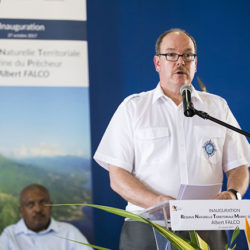
Photo gallery
Half air half water New Caledonia © N.Faure
"Tricot rayé" New Caledonia ©N.Faure
Green turtle ©N.Faure
Acropora New Caledonia ©N.Faure
coral patchwork ©N.Faure
Nautile New Caledonia © N.Faure
Butterfly fish © N.Faure
Picasso reef fish New Caledonia © L.Mathon
Aetobatus narinari eagle ray ©L.Mathon Explorations de Monaco
Carcharhinus amblyrhynchos grey shark New Caledonia ©L.
Mathon
Whitetip shark Carcharhinus albimarginatus New Caledonia © L. Mathon
Grey shark New Caledonia ©L.
Vigliola
School of humpback parrotfish ©L.
Vigliola
Napoleon New Caledonia ©L.
Vigliola
Reefs New Caledonia © L. Mathon
Green turtle ©L.Vigliola
